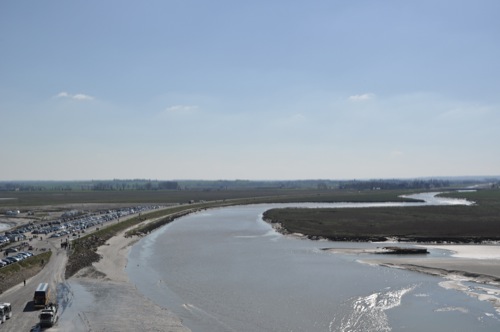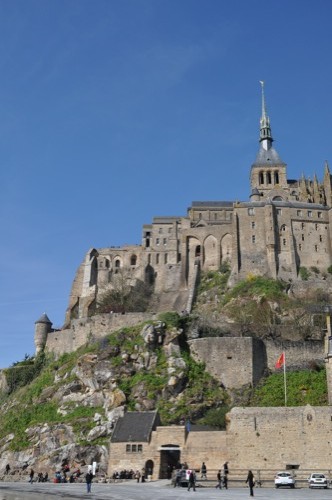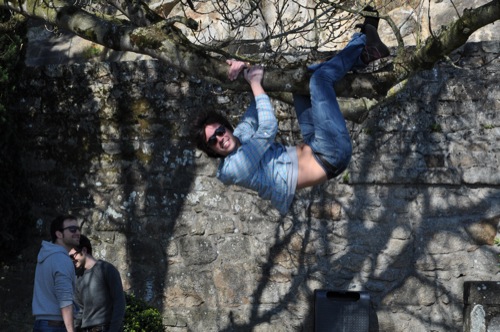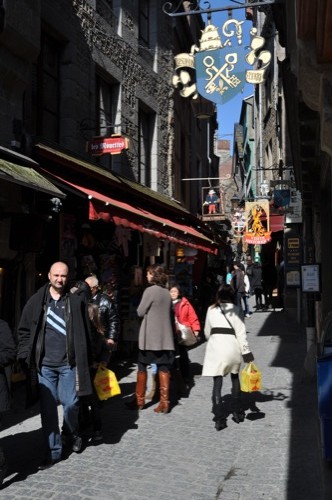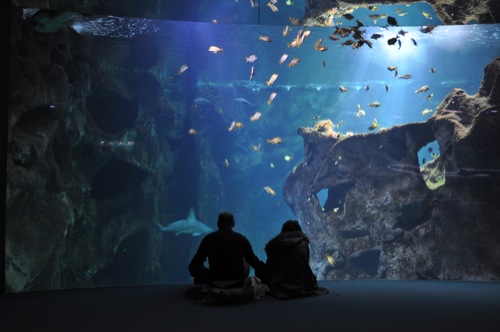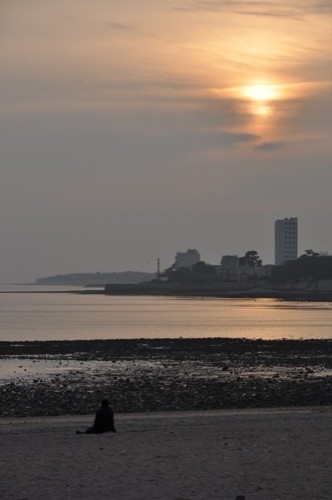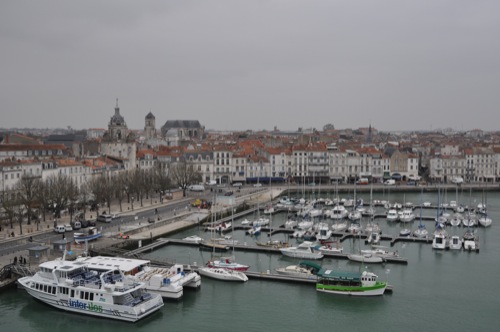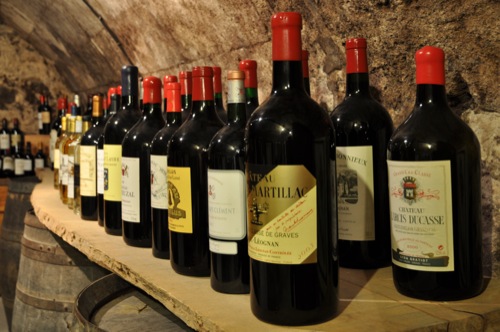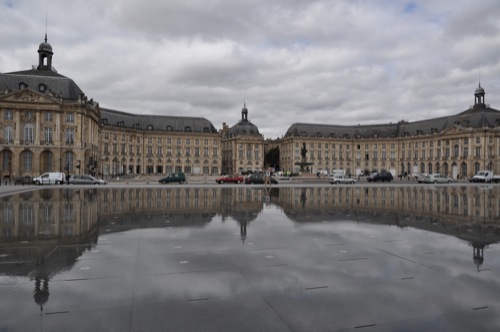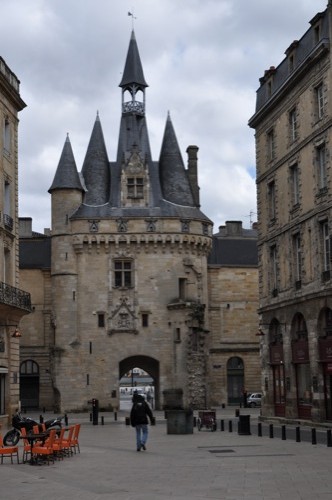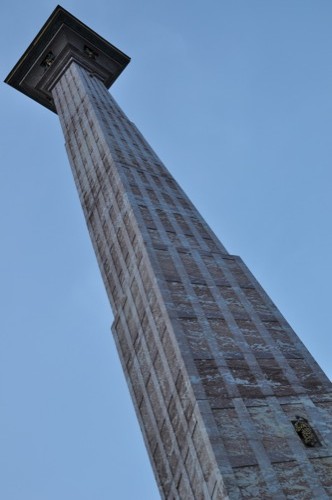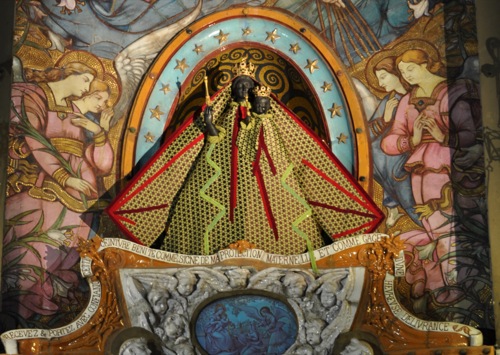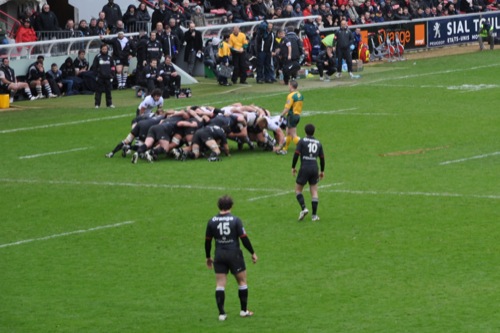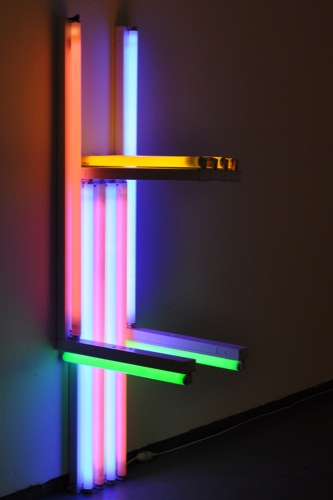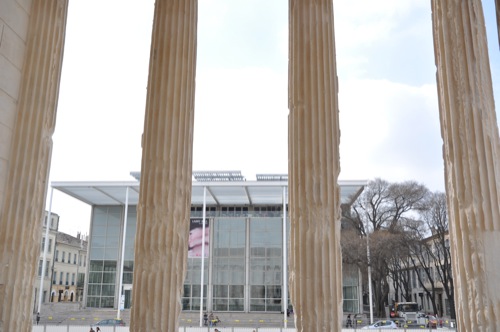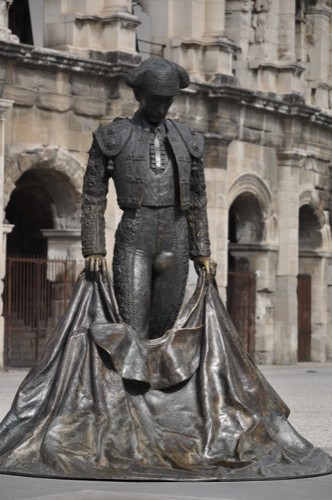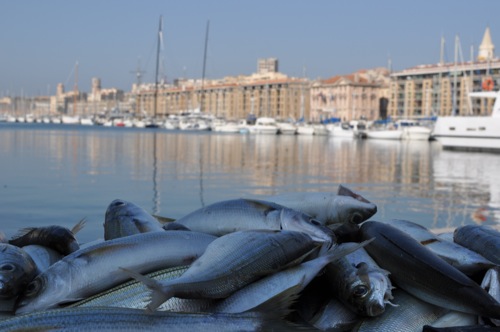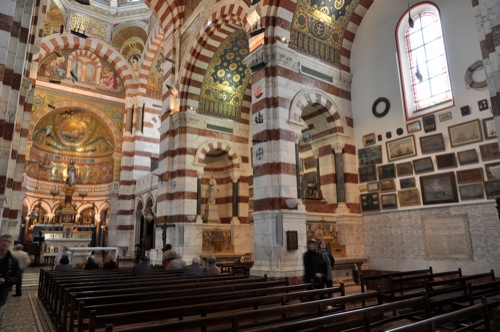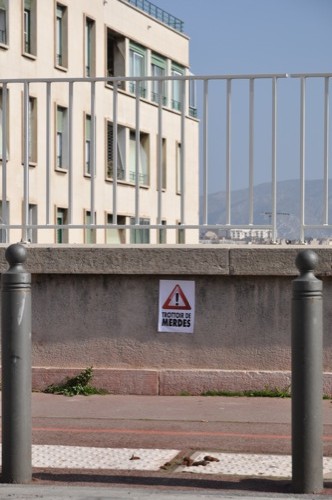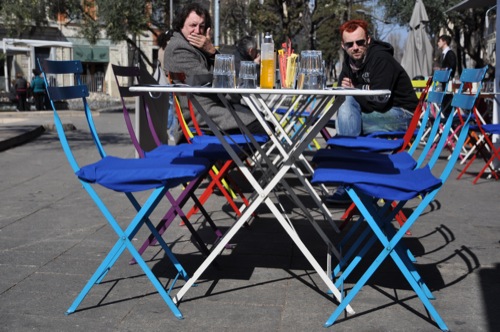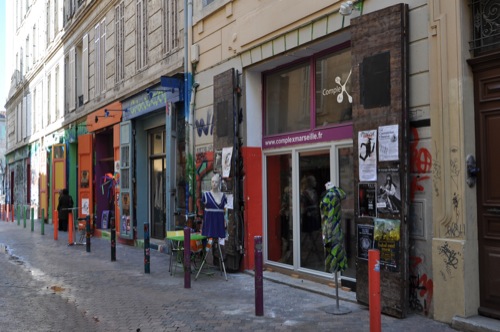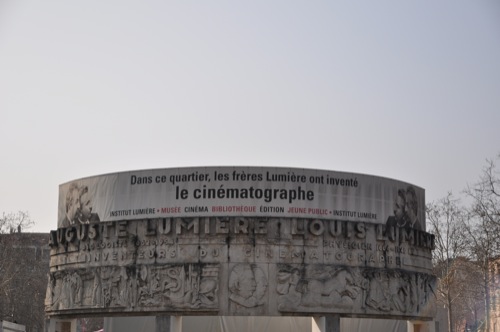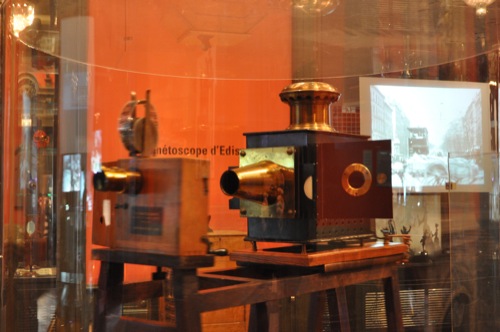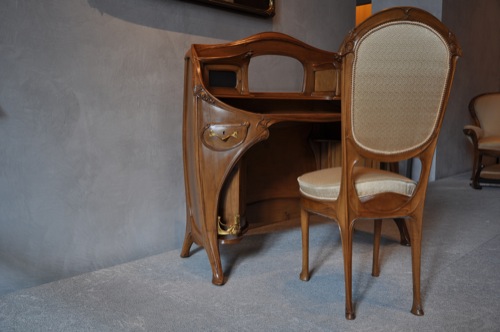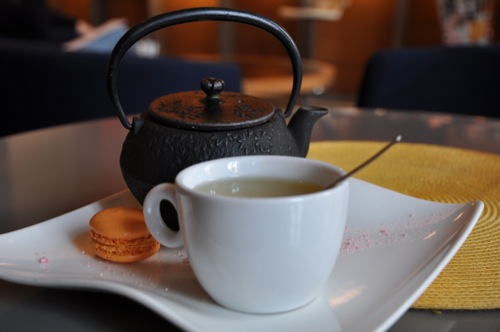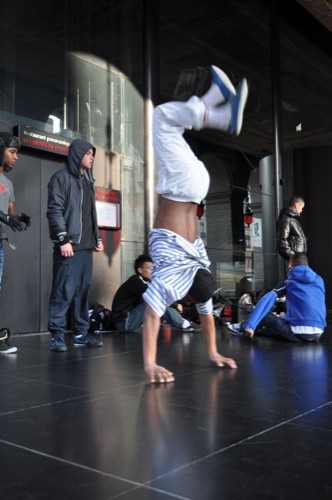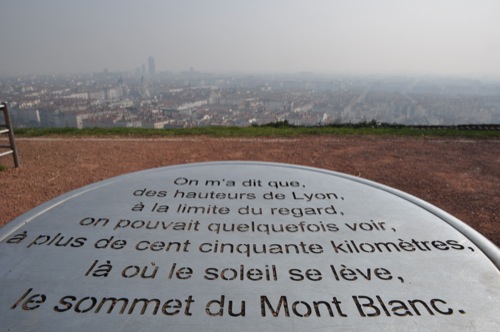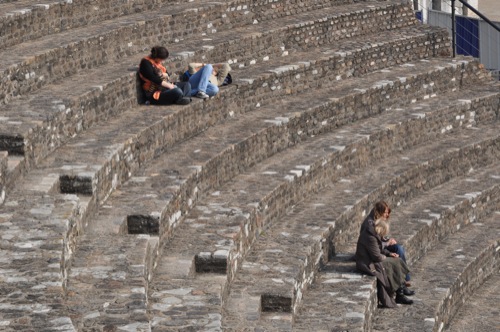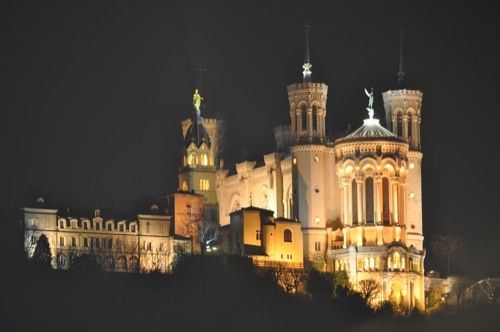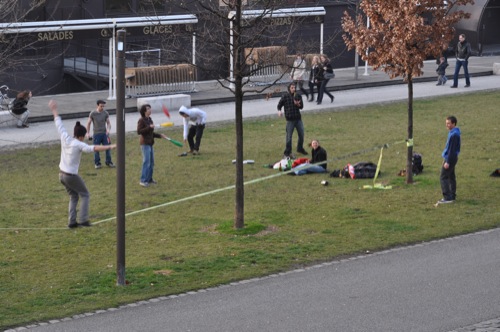I finally moved on from Marseille earlier today, after 4 days it’s definitely time to do something new but I’ve enjoyed myself here and it’s been nice relaxing in the sun shine.
Yesterday I went to the Art of Africa, Oceania and Amerindia and the Mediterranean Archaeology museums which are in the same building. They were OK, nothing to special other than the scary masks in the Africa, Oceania and Amerindia museum, but it wasn’t a bad way to spend some time.
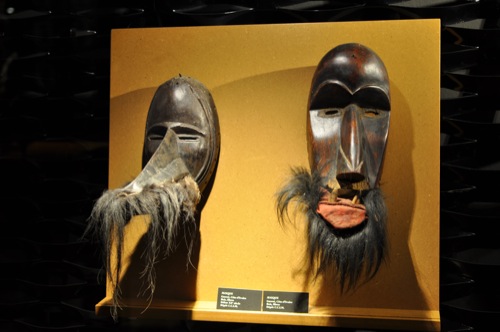
Yikes!
At lunch time I met up with a friend of a friend called Justine who’d been living in Marseille for the last 6 months. She didn’t know me at all, so it was very kind of her to take some time to have lunch with me and explain a little bit about Marseille. We went for couscous in a small restaurant where people were all sitting shoulder to shoulder. The food was good and incredibly cheap, and we just chatted and got to know each other.
After lunch we went for a wander in Marseille, which seems to be what I do every day, and she explained a little about the city. The area we went for lunch in is called Belsunce, and it’s one of the more downmarket areas on the south side of Marseille, south of the train station. It’s full of narrow streets crammed with little shops, and Justine told me that the mayor had been trying to get rid of the people who lived and worked there for a while to renovate the area and make it more in keeping with the rest of the city centre, but he hasn’t succeeded yet.
From there we walked along the coast on the south side of the city which is called La Corniche. It has really nice views over the city and the sea, but has a busy road right next to the pavement so there’s the constant buzz of traffic whizzing past you. On the way there’s the Palais du Pharo which is a huge residence built by Napoleon, and eventually ended up being owned by the city. The building itself is quite pretty, but at the back of it away from the road is a small paved area and paths where you can see the sea without all of the distractions (boats, tourists – like me, buildings) that you get when trying to look at it from the Vieux Port area.
We joined all the other people looking out to sea, and Justine noticed that there were two small boats at the entrance to the harbour, then she remembered that she’d heard something about a strike by the port workers, so those small boats were actually blocking the exit and stopping any ships from leaving or coming in. This was the first that I’d heard of it, so we kept watching and talking for a few minutes then saw a medium sized cargo ship moving towards the barricade. Everyone around us was staring at the boats and trying to figure out what was going to happen. There was no way the cargo ship was going to stop in time, even if it wanted to, but the port worker’s boats were holding firm too. At the last minute when we thought there was going to be a collision the blockade was moved, but there couldn’t have been more that 2 or 3 metres between the cargo ship and the boats. Justine told me that the Marseillaise were crazy, but they stood up for what they believed in.
After the excitement on the high seas we kept going along the coast and Justine remembered she’d found a pretty little area of fishermen’s houses when she’d been exploring the area, so we tried to find them again. She told me that she had a photographic memory of the place she was trying to get to, but the actual route to take to find that place was a little more of a mystery. It’d taken us 10 minutes to find the couscous restaurant that she goes to regularly, but she was on form with the fisherman’s houses as we found them first time.
Once again it was a really pretty area, not on the tourist trail, which made me happy that I’d found someone to guide me around a little. It sounds like I’m repeating myself, but the sea was gorgeous and blue/green again, and the huts looked very cute. She also pointed out that the rocks along the coast around Marseille were all white like Dover rather than the more standard grey. I have to admit that I hadn’t really noticed, but now that I’d been told it stuck in my memory.
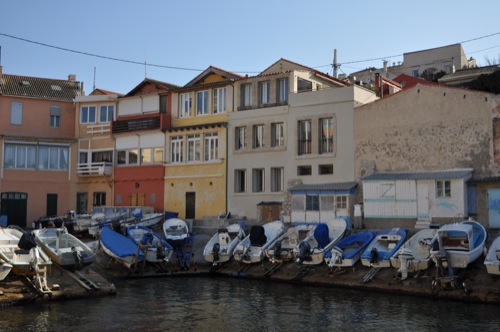
Small houses (but not the huts) on the water
Time for a change of scene, so we took the bus to Parc Longchamps. The bus was packed to bursting but we couldn’t really figure out why until a few stops later when a whole class of little school children got off and there was instantly room to breathe! A short trip on the métro followed the bus, then Justine told me that we had to find the correct entrance to the park as there were many of them. So we made it to the right one, and it was worth it as there’s a huge water feature overlooking the street, from there you climb up the stairs to the top and go through to the other side where the park falls away back to ground level, which is actually a little strange.
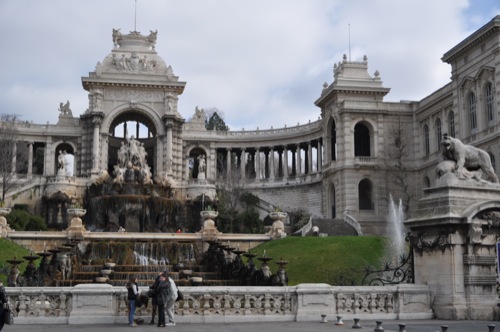
The "correct" entrance to Parc Longchamps
Last stop on the tour was La Friche La Belle De Mai, which was an abandoned factory before it became a cultural melting pot for Marseille. The main building where it’s based is huge and houses an art gallery, a radio station and lots of other things that I can’t remember, and around this there are concert venues, a skate park, a restaurant and more. We went to the gallery which had collections of art from a number of different local (I assume) artists, all modern, mostly funny, quite political and highly sexed. It’s the type of thing that you don’t see in a normal gallery and was quite cool to see exhibited.
The most important thing that I learned from Justine was that in Marseille there aren’t a lot of blockbuster tourist sights (which I mentioned once or twice already), but the charm of the city is in the changing areas and seeing the different ways that neighboring areas live. Seeing the North African and Middle Eastern area, then a few streets further east there’s the more creative Cours Julien, and seeing the Nouveau Riche moving into the Panier and living next to poorer families that haven’t been priced out of the area yet. I’m a very bad people watcher, but she pushed me into paying more attention to the people that were in the area that I was visiting.
Today I decided to use that new knowledge and sense of adventure to walk somewhere, but without using a map. I had two and a half hours to spare in the morning after checking out of the hotel, so I went east. After 90 minutes of walking through some areas that I’d already seen and others that looked totally anonymous, I ended up back at Parc Longchamps. That might not be considered a success, but it wasn’t a bad place to end up and I had a play with RetroCamera on my phone.
My plan for the afternoon was to take a boat trip out to the Calanques, which are like coves or fjords that have naturally been eroded in the white rock of the coast. The boat tours take between 2 and 3 hours and take people out to see up to 12 of the calanques. It’s also possible to hike out to them, but it’d take way more time, skill and effort than I had available.
The first calanque looked nice, and had twenty or thirty houses and small buildings at the bottom of a steep rocky hillside. Not exactly idyllic or practical, but it did look good. Most of the calanques looked pretty similar, some of them were little villages, others had boats collected on the waters edge, and one or two were beaches. There wasn’t a lot of variation between them though, and I ended up taking photos of trees instead.
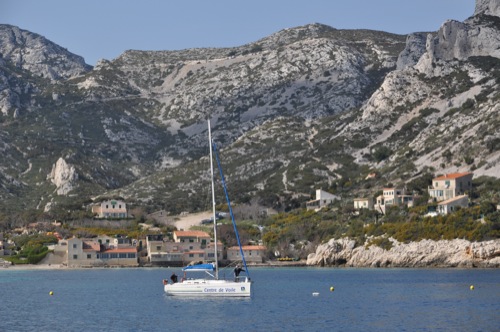
Sormiou calanque
It was nice to head out onto the water to see a little more of the coast, but it felt bitterly cold for the three hours that we were out there. It was warm in the city, but on the boat even with gloves on and my jacket buttoned up I still had the shivers. So my top tip is to take a zip up jacket with you when you go on a boat in the Mediterranean.
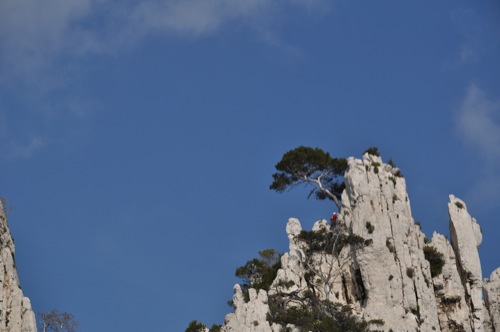
Gorgeous skies and trees on top of the cliffs
